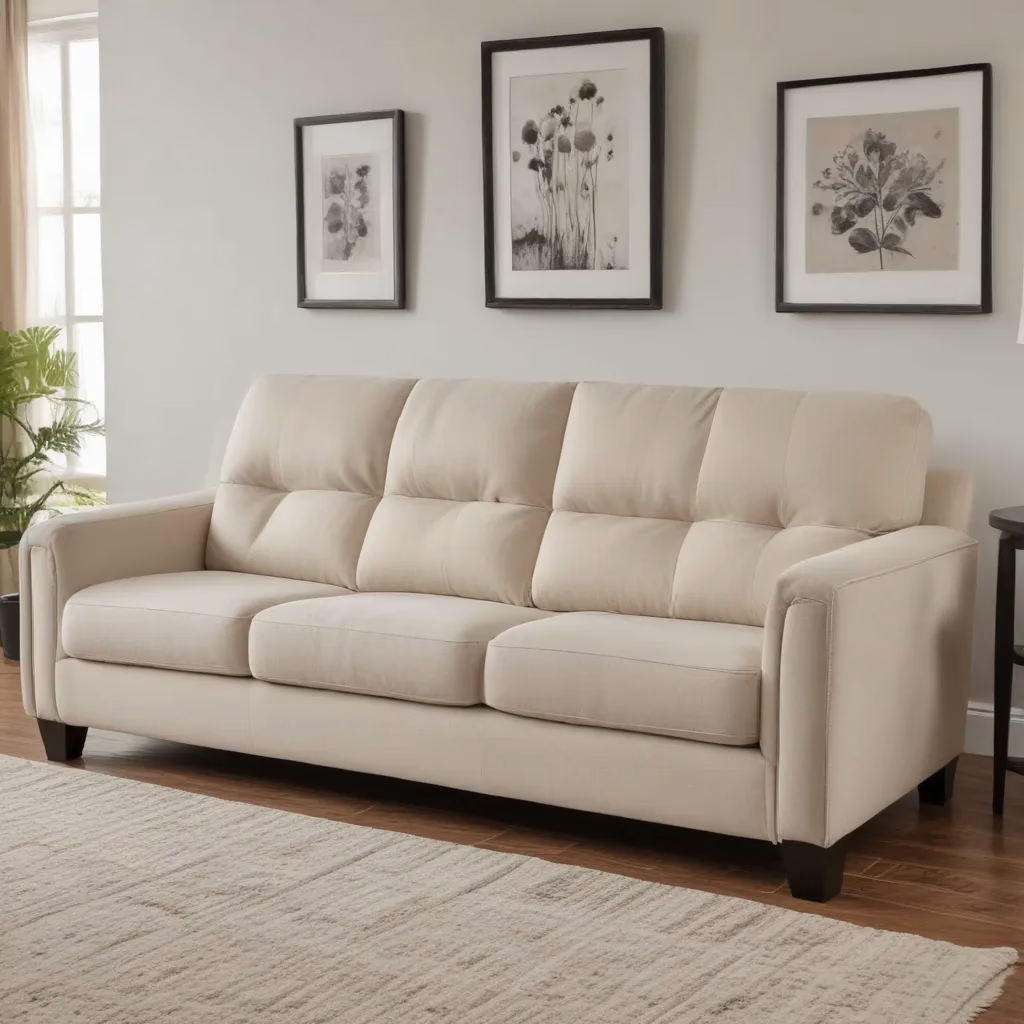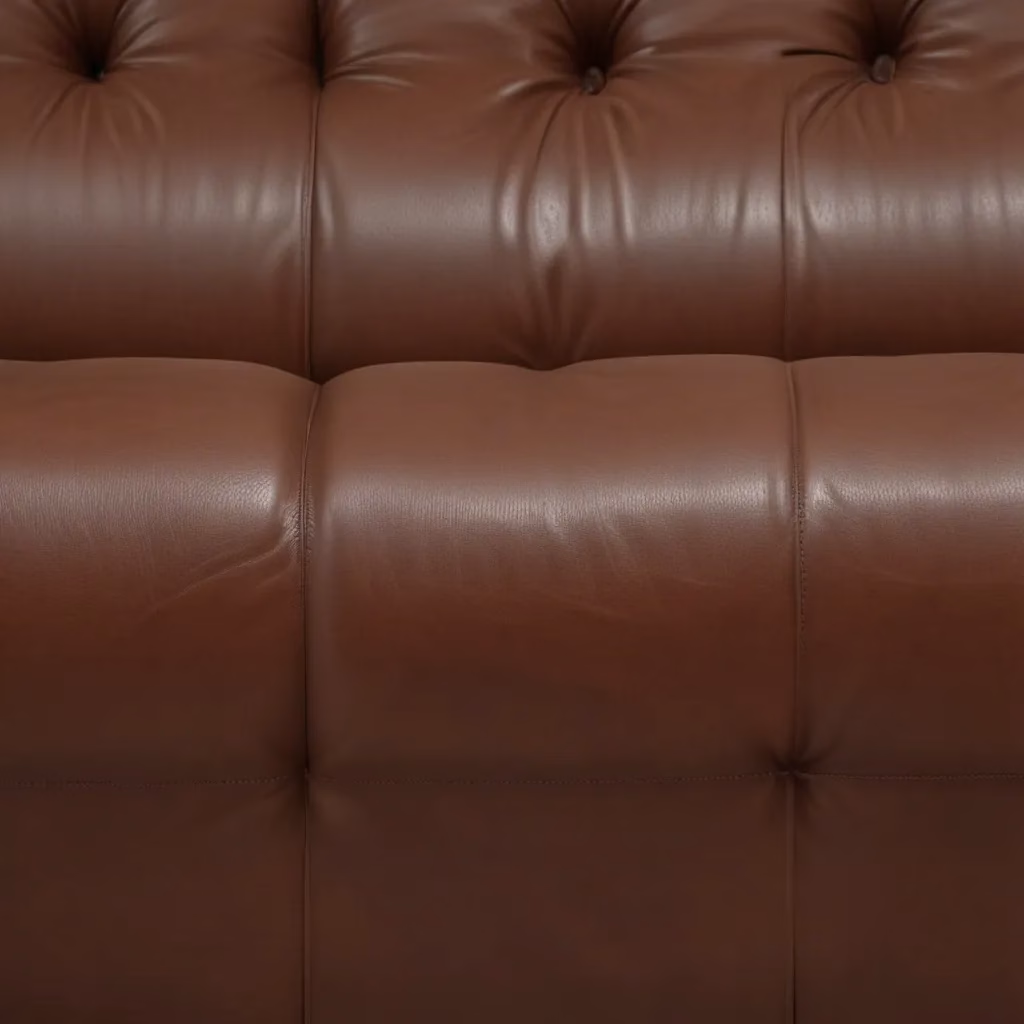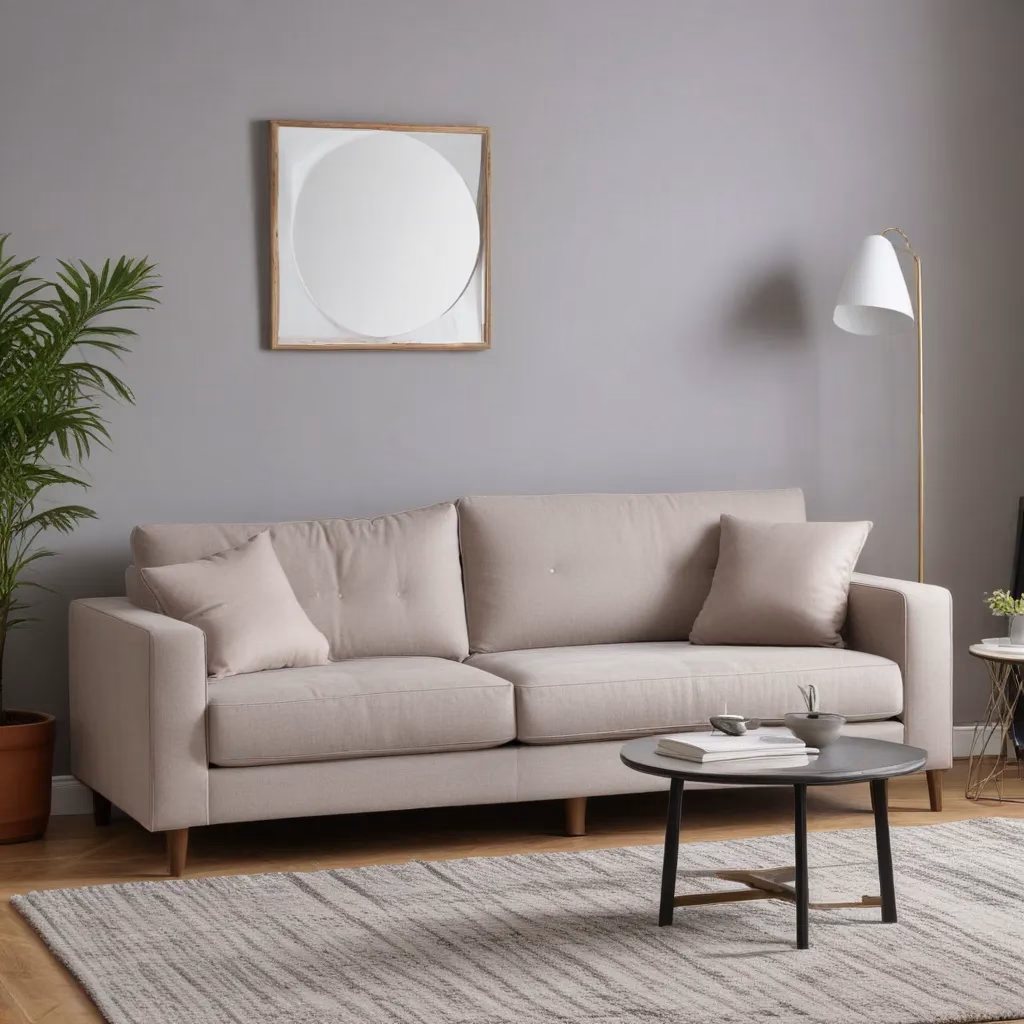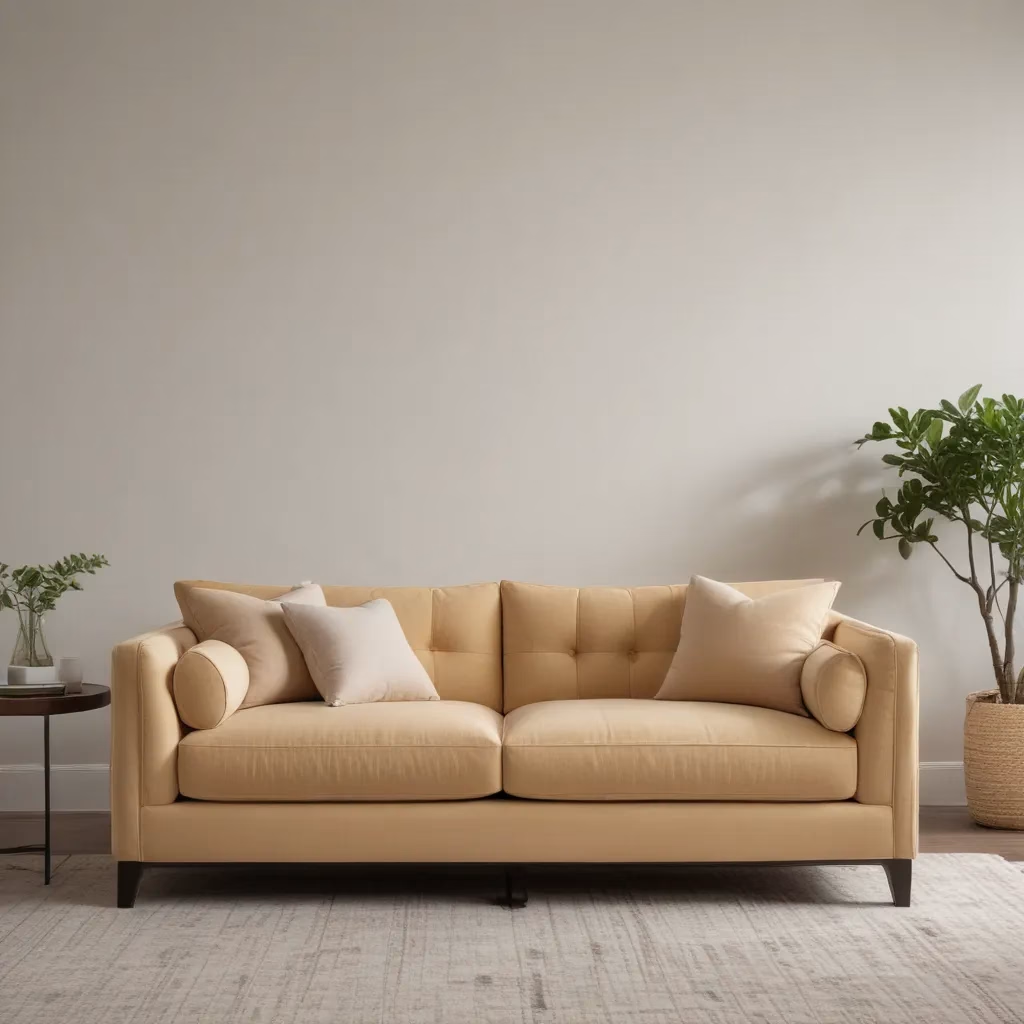
Selecting the perfect sofa is a critical decision that impacts the style, comfort, and longevity of your living room. In our 15 years installing… Alongside the shape, size, and overall design, the upholstery fabric plays a vital role in determining a sofa’s durability, maintenance requirements, and ultimately, its suitability for your lifestyle.
Now, this might seem counterintuitive…
As an experienced furniture consultant and interior design writer, I’ve seen how the quality of upholstery can make or break a furniture investment. In this comprehensive guide, I’ll walk you through the nuances of sofa upholstery grading, explain the significance of fabric durability and texture, and share practical tips for choosing the best upholstery to suit your needs.
Upholstery Grading and Quality
When evaluating sofa options, one of the first things to consider is the grade and quality of the upholstery fabric. Upholstery fabrics are typically graded on a scale, with the lowest grade being ‘light domestic use’ and the highest being ‘heavy commercial use.’
-
Light Domestic Use: These delicate fabrics, such as silks, linens, and lightweight cottons, are best suited for accent furniture that sees minimal wear and tear, like side chairs or stools. They require gentle cleaning and are not suitable for high-traffic areas.
-
Medium Domestic Use: All-purpose fabrics like cotton/polyester blends and tightly woven textiles fall into this category. They are more durable than light domestic fabrics and can withstand everyday residential use in low-traffic areas.
-
Heavy Domestic Use: Fabrics in this category, including microfibres, vinyls, and polyester blends, are incredibly sturdy and abrasion-resistant. They are designed to withstand constant, intensive use in high-traffic living spaces and on kid- or pet-friendly furniture.
-
Commercial Use: These incredibly hard-wearing fabrics meet stringent legal standards for flame retardancy and safety. Though overkill for most homes, commercial-grade upholstery is built to withstand constant, intensive use in settings like hotels, offices, or restaurants.
Fabric Durability and Texture
In addition to the upholstery grading, the specific attributes of the fabric itself play a significant role in determining its suitability and longevity. Some key factors to consider include:
Fiber Content: Natural fibres like cotton, linen, wool, and silk have inherent strengths and weaknesses. Synthetics, on the other hand, are engineered for enhanced performance, often being more wrinkle-resistant, stain-proof, and durable.
Weave Tightness: A tighter, higher thread-count weave creates a denser, more resilient fabric that can better withstand wear and tear. Special finishes like stain-resistant coatings or acrylic backings can further enhance performance.
Fabric Weight: Heavier, thicker fabrics tend to be more durable than lighter-weight options, which are more prone to pilling and tearing. Abrasion-resistance testing, such as the Martindale rub test, can help assess a fabric’s expected lifespan.
When choosing upholstery, it’s essential to strike a balance between aesthetics and practicality. While delicate fabrics like silk or linen may offer a luxurious look, they may not be the best choice for high-traffic areas or households with pets and children. On the other hand, heavily commercial-grade fabrics, though exceptionally durable, may not align with your desired décor.
Choosing Upholstery Fabrics for Lifestyle
Evaluating your household and usage needs is crucial when selecting the ideal sofa upholstery. Consider factors such as:
-
Family Dynamics: If you have young children or pets, you’ll want to opt for highly durable, stain-resistant fabrics that can withstand frequent wear and tear. Performance textiles like iClean or Crypton may be worth the investment.
-
Entertaining Habits: For those who regularly host guests or entertain, fabrics with enhanced abrasion resistance and easy-care properties will be invaluable in maintaining your sofa’s pristine appearance.
-
Personal Preferences: If you prioritize luxury and tactile appeal over maximum durability, you may be drawn to sumptuous natural fibres like velvet or linen, despite their increased maintenance requirements.
Regardless of your specific needs, it’s wise to order fabric swatches and test them in your living space before making a final decision. This allows you to visualize the colour, texture, and overall aesthetic in your existing décor, helping you avoid costly mistakes.
Living Room Layout Tips
Once you’ve selected the perfect sofa and upholstery, it’s time to thoughtfully incorporate it into your living room layout. Here are a few key considerations:
Space Planning for Sofa Placement: Measure your room dimensions carefully and consider traffic flow, focal points, and the size of your other furniture pieces. Positioning the sofa to create a balanced, welcoming seating arrangement is crucial.
Balancing Proportions: double-check that the scale of your sofa complements the size of the room. Oversized or undersized sofas can quickly throw off the visual harmony of the space. Experiment with different arrangements to find the optimal fit.
Cohesive Design: Anchor your sofa as the focal point and build out the rest of your living room décor to create a cohesive, visually appealing aesthetic. Coordinate your sofa’s upholstery with complementary textures, patterns, and accent pieces for a polished, intentional look.
By carefully considering both the practical and aesthetic factors, you can transform your sofa into a harmonious and comfortable centerpiece that elevates the entire living room.
Upholstery Care and Cleaning
Proper care and maintenance are essential for preserving the longevity and appearance of your sofa’s upholstery. Here are some key tips:
Recommended Cleaning Methods: Follow the manufacturer’s instructions for your specific fabric. In general, use a vacuum with an upholstery attachment to remove dust and debris regularly. For minor stains, blot the area with a clean, damp cloth, avoiding rubbing, which can push the stain deeper into the fabric.
Spot Removal Techniques: Refer to the fabric’s care label for guidance on tougher stains. Avoid using harsh chemicals or scrubbing, as this can damage the upholstery. Professional cleaning may be necessary for more stubborn marks or deep-set soiling.
Preserving Fabric Longevity: Regularly rotate and flip cushions to double-check that even wear. Consider using fabric protectors to guard against spills and stains. Monitor for signs of pilling or fraying, and address them promptly to prevent further deterioration.
Protecting Your Sofa Investment
Investing in a high-quality sofa is a significant financial decision, so it’s crucial to take steps to preserve your investment for years to come.
Identifying Wear and Tear: Familiarize yourself with the early signs of wear, such as loose threads, faded colours, or sagging cushions. Addressing these issues promptly can help extend the life of your sofa.
Preventative Maintenance Strategies: Regular cleaning, proper care, and rotating cushions are essential for maintaining your sofa’s appearance and structural integrity. Consider professional cleaning or reupholstering services if the fabric becomes excessively worn or damaged.
Professional Cleaning and Reupholstering: For a comprehensive refresh, enlist the help of a professional upholsterer. They can deep clean your sofa, address any repairs, and even transform the look by reupholstering it in a fresh fabric that aligns with your current décor.
By staying vigilant and proactive in your sofa’s care, you can double-check that that your carefully selected investment provides comfort, style, and lasting enjoyment for years to come.
Sofa as a Focal Point
A well-chosen sofa can serve as the centerpiece of your living room, both in terms of comfort and aesthetics. Leverage your sofa as a focal point to create a visually striking and inviting space.
Enhancing Visual Appeal: Draw the eye to your sofa by complementing its upholstery with thoughtful accessorizing. Incorporate throw pillows, blankets, and decorative accents that echo the sofa’s colour, texture, and overall style.
Balancing Form and Function: While aesthetics are important, it’s crucial to prioritize ergonomic comfort. double-check that your sofa offers ample support, proper seat depth, and a comfortable recline angle to promote relaxation and optimal lounging.
Customizing with Pillows and Throws: Soft furnishings like plush throw pillows and cozy blankets can transform the look and feel of your sofa, allowing you to easily refresh the space with the changing seasons or your evolving design preferences.
Furniture Buying Guides
When it comes to selecting the perfect sofa, thorough research is key to making an informed, satisfying purchase. Here are some essential tips to guide you through the process:
Researching Sofa Options: Familiarize yourself with reputable furniture brands, their construction quality, and warranty coverage. Scour online reviews to get a well-rounded understanding of customer experiences and potential issues to look out for.
In-Store Considerations: When browsing showrooms or visiting retailers, take the time to thoroughly test each sofa’s comfort and stability. Examine the construction details, such as the frame, joints, and cushion fillings, to assess overall quality.
Budgeting for Delivery and Assembly: Factor in any additional costs associated with transporting and setting up your new sofa, as these can significantly impact your overall investment. Inquire about white-glove delivery services or in-home assembly to double-check that a seamless experience.
By combining your understanding of upholstery quality, lifestyle needs, and strategic layout planning, you can confidently select a sofa that not only looks stunning but also provides the comfort and durability your living room deserves. Happy furniture shopping!
Tip: Rotate cushions regularly to maintain even wear



